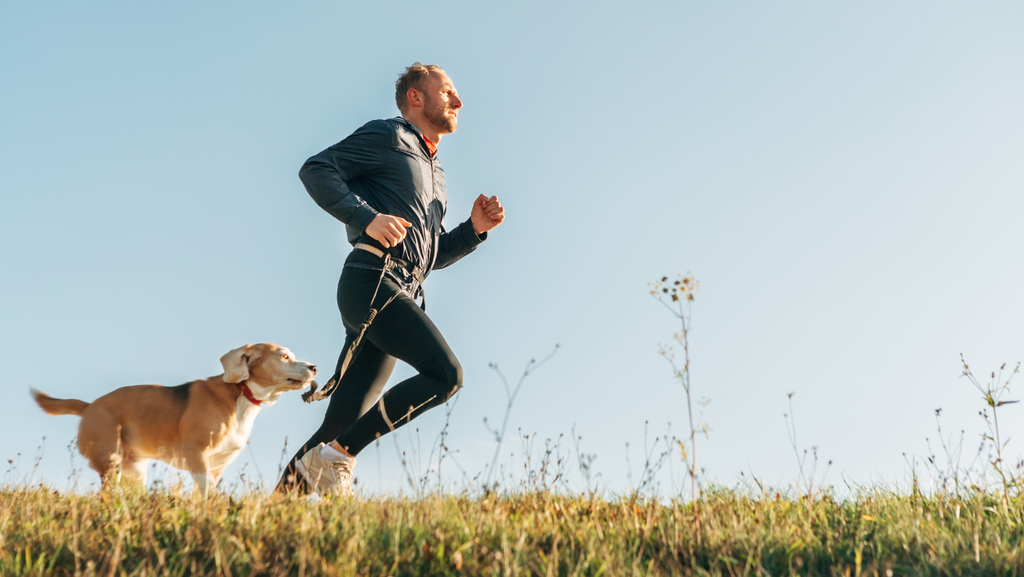How to Socialise a Shy Dog (Before Spring Arrives)

As winter begins to fade and the promise of spring approaches, you may start planning more outdoor adventures with your dog. If your dog is shy or nervous, the increased foot and paw traffic can be overwhelming. Whether your dog is a rescue still adjusting to their new home or simply has an introverted nature, now is the perfect time to help them build confidence in a calm, low-pressure way before dog parks, trails, and café patios become crowded.
What is socialisation and why is it important?
Socialisation is the process of exposing your dog to different environments, people, and animals in a positive and controlled manner. It helps your dog build confidence, learn how to interact with others, and reduce fear and anxiety. Proper socialisation can prevent aggression, fear-based behaviours, and other issues that may arise from a lack of exposure.
Here’s how to gently ease your shy dog into the social season ahead:

1. Start Small and Stay Local
Shy dogs do best with gradual introductions to new environments. Begin in quiet areas, like local parks or streets, during off-peak hours. You should allow your dog to decide if and when they are ready. Avoid dragging or pulling your dog toward new people. Allow your dog to sniff around, observe, and take in the surroundings at their own pace, with no pressure to interact with anyone.
Tip: Bring a high-value toy or treats to reward your dog every time they remain calm or show interest in their surroundings.
2. Practice Parallel Walking

While group training can be beneficial for socialising your doggos, it may induce stress and anxiety in shy or introverted dogs. Instead of diving straight into meet-and-greets, try walking in parallel with a calm friend's dog. Walk side-by-side at a safe distance, gradually getting closer if both dogs remain relaxed. This is a non-threatening way to help them become familiar with each other.
3. Read Their Body Language

A wagging tail doesn’t always mean a dog is happy. Look for signs of a relaxed demeanour, soft eyes, play-bow and curiosity as positive indicators. Avoid situations where your dog freezes, backs away, or begins barking; these behaviours suggest they are feeling overwhelmed. Never force interactions or push your dog beyond their comfort zone. Respect their boundaries to build trust and prevent fear from escalating.
Learn more about what your dog’s behaviour is telling you and when to seek help.
4. Bring Out Their Inner Puppy at Home
Playtime is an excellent way to build confidence. Engage in games like tug-of-war, provide puzzle toys, or practice basic trick training. This not only increases your dog’s trust in you and themselves but also helps them master simple commands, which will be useful for outings in public.
5. Expose Them to the World (Gently)

Gradually introduce your dog to a variety of new sights, sounds, and smells—like construction noises, bicycles, and different people. Reward calm behaviour and avoid forcing any interactions. Focus on exposure, not pressure.
6. Join Small Group Classes

Look for training or socialisation groups tailored to shy or reactive dogs. These controlled environments, often led by professionals, can provide guidance for both of you. Additionally, you’ll meet others who understand your situation.
Why It Matters to Do It Before Spring
As the weather warms up, public spaces will become busier. Dogs that haven't had recent social experiences may react unpredictably or with stress in these environments. Preparing your shy dog now will set them up for success when spring fully arrives.
Every Dog Blooms at Their Own Pace

Not every dog will thrive in the chaos of a busy off-leash park, and that’s perfectly fine. Your goal isn’t to change who your dog is; it’s to equip them with the tools they need to feel safer and more confident in the world around them.
Start slow. Be patient. Spring is coming, and your shy dog deserves to shine too!
References:
-
Cutler, J. H., Coe, J. B., & Niel, L. (2017). Puppy socialisation practices of a sample of dog owners from across Canada and the United States. Journal of the American Veterinary Medical Association, 251(12), 1415-1423.
-
https://vcahospitals.com/pediatric/puppy/behavior-training/how-to-socialize-a-shy-puppy
- https://www.kinship.com/dog-behavior/how-to-socialize-a-dog



